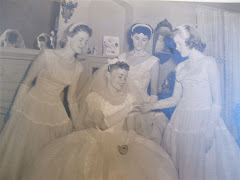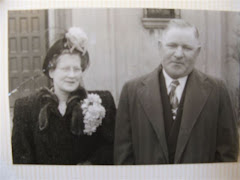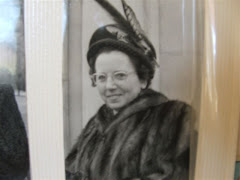Thursday, March 20, 2008
The Great Famine in Mayo
The Great Famine in Mayo: "The Noble Marquis assured them that no exertions of his should be spared to obtain for them, from Her Majesty's Government immediate employment'.
As a relief measure, the government imported large quantities of maize from America which became known as 'Peel's brimstone' because of the ill effects it had on the digestive system. Local relief committees were established. Under the Poor Law Act of 1838, Mayo was divided into five areas or unions which administered relief: Ballina, Ballinrobe, Castlebar, Swinford and Westport. Each union was required to maintain a workhouse where local paupers could be fed and housed.
Workhouses soon became overwhelmed by numbers seeking admittance and many starving people were turned away. Relief schemes introduced in 1846 included giving employment on public works such as road making, breaking stones, drainage works, pier and bridge building. The Corrib to Mask canal was one such scheme. Men were paid 8 to 10 pennies a day, while women and children got 6 pennies. Some unscrupulous overseers favoured relatives in granting employment, often at the expense of the most needy. Gaining employment did not guarantee security. In February 1847 the Tyrawly Herald reported an inquest at Coolcran:
'The deceased was employed at the public works, and on Saturday morning he went to the hill of Gurteens to meet the pay clerk where, in"
As a relief measure, the government imported large quantities of maize from America which became known as 'Peel's brimstone' because of the ill effects it had on the digestive system. Local relief committees were established. Under the Poor Law Act of 1838, Mayo was divided into five areas or unions which administered relief: Ballina, Ballinrobe, Castlebar, Swinford and Westport. Each union was required to maintain a workhouse where local paupers could be fed and housed.
Workhouses soon became overwhelmed by numbers seeking admittance and many starving people were turned away. Relief schemes introduced in 1846 included giving employment on public works such as road making, breaking stones, drainage works, pier and bridge building. The Corrib to Mask canal was one such scheme. Men were paid 8 to 10 pennies a day, while women and children got 6 pennies. Some unscrupulous overseers favoured relatives in granting employment, often at the expense of the most needy. Gaining employment did not guarantee security. In February 1847 the Tyrawly Herald reported an inquest at Coolcran:
'The deceased was employed at the public works, and on Saturday morning he went to the hill of Gurteens to meet the pay clerk where, in"
Subscribe to:
Post Comments (Atom)





.jpg)

.jpg)

.jpg)


No comments:
Post a Comment